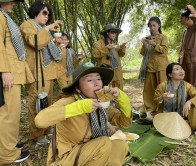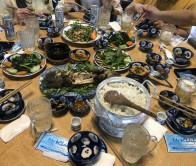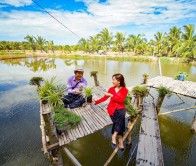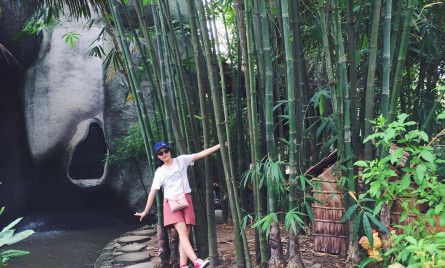Mekong Eco Tour- Óc Eo – Mekong Cruise
Mekong Eco Tour- Óc Eo – Mekong Cruise
Óc Eo is an archaeological site in Thoai Son district in southern An Giang Province, Vietnam, in the Mekong River Delta. It is also one of the modern day communes of Vietnam. Óc Eo may have been a busy port of the kingdom of Funan between the 1st and 7th centuries. Scholars use the term “Óc Eo Culture” to refer to the ancient material culture of the Mekong Delta region that is typified by the artifacts recovered at Óc Eo through archeological investigation.
 |
 |
 |
Excavation at Óc Eo began on February 10, 1942, after French archaeologists had discovered the site through the use of aerial photography. The first excavations were led by Louis Malleret. The site covers 450 ha.
Óc Eo is situated within a network of ancient canals that criss cross the low flat land of the Mekong Delta. One of the canals connects Óc Eo to the town’s seaport while another goes 42 miles north-northeast to Angkor Borei. Óc Eo is longitudinally bisected by a canal, and there are four transverse canals along which pile-supported houses were perhaps ranged
 |
 |
 |
Archeological sites reflecting the material culture of Óc Eo are spread throughout southern Vietnam, but are most heavily concentrated in the area of the Mekong Delta to the south and west of Ho Chi Minh City. The most significant site, aside from Óc Eo itself, is at Tháp Muời north of the Tien River, where among other remains a stele with a 6th-century Sanskrit text has been discovered…
 |
 |
 |
The remains found at Óc Eo include pottery, tools, jewelry, casts for making jewelry, coins, and religious statues. Among the finds are gold jewellery imitating coins from the Roman Empire of the Antonine period. Roman golden medallions from the reign of Antoninus Pius, and possibly his successor Marcus Aurelius, have been discovered at Óc Eo, which was near Chinese-controlled Jiaozhou and the region where Chinese historical texts claim the Romans first landed before venturing further into China to conduct diplomacy in 166. Many of the remains have been collected and are on exhibition in Museum of Vietnamese History in Ho Chi Minh City



